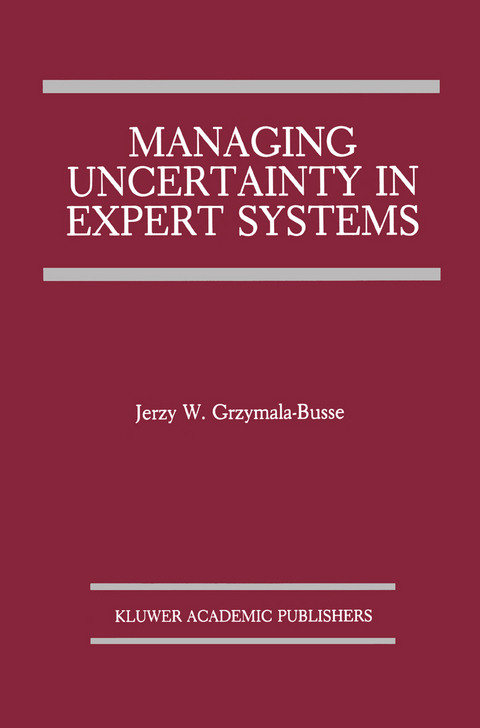
Managing Uncertainty in Expert Systems
Springer-Verlag New York Inc.
978-1-4613-6779-6 (ISBN)
3. Textbook for a course in expert systems,if an emphasis is placed on Chapters 1 to 3 and on a selection of material from Chapters 4 to 7. There is also the option of using an additional commercially available sheU for a programming project. In assigning a programming project, the instructor may use any part of a great variety of books covering many subjects, such as car repair. Instructions for mostofthe "weekend mechanic" books are close stylisticaUy to expert system rules. Contents Chapter 1 gives an introduction to the subject matter; it briefly presents basic concepts, history, and some perspectives ofexpert systems. Then itpresents the architecture of an expert system and explains the stages of building an expert system. The concept of uncertainty in expert systems and the necessity of deal ing with the phenomenon are then presented. The chapter ends with the descrip tion of taxonomy ofexpert systems. Chapter 2 focuses on knowledge representation. Four basic ways to repre sent knowledge in expert systems are presented: first-order logic, production sys tems, semantic nets, and frames. Chapter 3 contains material about knowledge acquisition. Among machine learning techniques, a methodofrule learning from examples is explained in de tail. Then problems ofrule-base verification are discussed. In particular, both consistency and completeness oftherule base are presented.
1 Introdution.- 1.1 Architecture of an Expert System.- 1.2 Building Expert Systems.- 1.3 Uncertainty in Expert Systems.- 1.4 Taxonomy of Expert Systems.- 2 Knowledge Representation.- 2.1 First-Order Logic.- 2.2 Production Systems.- 2.3 Semantic Nets.- 2.4 Frames.- Exercises.- 3 Knowledge Acquisition.- 3.1 Manual and Interactive Techniques.- 3.2 Machine Learning.- 3.3 Rule Learning from Examples.- 3.4 Rule Base Verification.- Exercises.- 4 One-Valued Quantitative Approaches.- 4.1 Probability Theory.- 4.2 Systems using Bayes’ Rule.- 4.3 Belief Networks.- 4.4 Certainty Factors.- Exercises.- 5 Two-Valued Quantitative Approaches.- 5.1 Dempster-Shafer Theory.- 5.2 Inferno.- 5.3 Concluding Remarks.- Exercises.- 6 Set-Valued Quantitative Approaches.- 6.1 Fuzzy Set Theory.- 6.2 Incidence Calculus.- 6.3 Rough Set Theory.- 6.4 Concluding Remarks.- Exercises.- 7 Qualitative Approaches.- 7.1 Modal Logics.- 7.2 Nonmonotonicity.- 7.3 Plausible Reasoning.- 7.4 Heuristic Methods.- 7.5 Concluding Remarks.- Exercises.- References.
| Erscheint lt. Verlag | 9.10.2012 |
|---|---|
| Reihe/Serie | The Springer International Series in Engineering and Computer Science ; 143 |
| Zusatzinfo | XXI, 224 p. |
| Verlagsort | New York, NY |
| Sprache | englisch |
| Maße | 155 x 235 mm |
| Themenwelt | Sachbuch/Ratgeber ► Natur / Technik ► Garten |
| Informatik ► Theorie / Studium ► Künstliche Intelligenz / Robotik | |
| Mathematik / Informatik ► Mathematik ► Allgemeines / Lexika | |
| Mathematik / Informatik ► Mathematik ► Logik / Mengenlehre | |
| ISBN-10 | 1-4613-6779-4 / 1461367794 |
| ISBN-13 | 978-1-4613-6779-6 / 9781461367796 |
| Zustand | Neuware |
| Haben Sie eine Frage zum Produkt? |
aus dem Bereich


